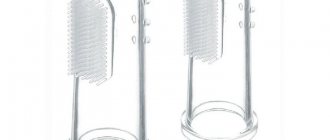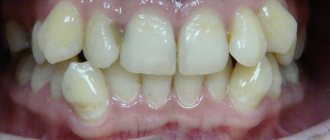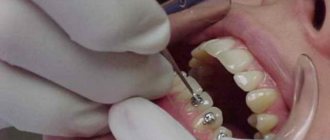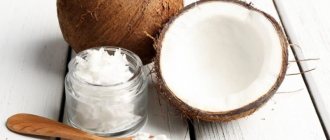What are the benefits of soda-salt solution for mouth rinsing?
The product is widely used for rinsing during the treatment of diseases of the teeth and gums: caries, gingivitis, periodontitis and periodontal disease. The solution helps out in cases where acute symptoms arise suddenly and you need to alleviate the condition before visiting the dentist. The soda-salt composition perfectly relieves inflammation and redness of the mucous membrane, disinfects, has a calming effect and helps to slightly reduce pain.
Sodium bicarbonate or simply soda is a product that is used to clean dirty surfaces, for example, in the kitchen. But a solution with its addition also helps in the treatment of many dental diseases. In combination with salt and sometimes with iodine, soda gives a pronounced antibacterial effect, strengthens hard and soft tissues, and prevents the further spread of the pathological process. Thus, the effect of the composition can be formulated in several main theses:
- has an antibacterial effect,
- helps stop the pathological process and prevents further destruction of the enamel,
- stops inflammatory processes in the mucous membrane,
- helps to significantly reduce pain and alleviate the condition,
- removes bacterial plaque and tartar.
Soda-saline solution helps in the treatment of many dental diseases.
Soda-saline solution is not suitable for daily use.
It is recommended in cases where there are clear signs of pathological processes in the oral cavity. The composition can be used for emergency relief of acute symptoms, and as a maintenance agent - only after agreement with the attending physician.
Baking soda rinse
Baking soda is known for its antifungal effect. A solution with soda gently cleanses the oral cavity and tooth enamel, blocks the development of pathogenic microbes, disinfects the oral cavity, and reduces swelling. In order for teeth rinsing to solve existing dental problems, you must follow the recommendations above and maintain the proportions. Water for rinsing your mouth must be boiled. Use 1 tsp per glass of water. soda The contents of the container must be mixed well, the liquid should be cloudy, whitish, sediment at the bottom is unacceptable. If you are worried about acute toothache, then it is permissible to double the amount of soda.
Soda solution is an excellent oral disinfectant.
Indications for use
It is better to use the composition for rinsing on the recommendation of a specialist - the treating dentist. The main indications for use are listed below:
- heavy plaque, supra- and subgingival deposits, unpleasant odor: the composition effectively fights bacteria in the oral cavity, dissolves hardening deposits and prevents the growth of pathogenic microflora. In addition, the active ingredients have a beneficial effect on the enamel and help strengthen it, and by cleaning surfaces from bacteria and their metabolic products, breath is freshened,
- severe toothache: it is not possible to cure the problem with just rinsing, but it is quite possible to significantly reduce the intensity of acute symptoms. The product will help normalize the condition so you can safely get to the doctor,
- after tooth extraction: preventive rinsing with a soda-salt solution will help fight bacteria, prevent wound infection, help stop bleeding and stimulate healing processes. You just need to rinse carefully so as not to damage the blood clot in the hole,
- diseases of the teeth and gums: rinsing with salt and soda is recommended, among other things, as maintenance therapy during the treatment of caries, gingivitis, periodontitis and periodontal disease, periodontitis and periostitis with purulent processes - according to indications and only in concentrations recommended by a specialist.
Rinsing helps in the treatment of inflammation of the gums and dental plaque.
If there are microtraumas or cuts in the mouth, which may appear, for example, due to braces or incorrectly installed fillings, crowns and dentures, then such a solution will help to effectively disinfect tissues, and its regular use will help their rapid healing.
Medicinal and beneficial properties
For acute toothache, dentists advise using baking soda as one of the ways to relieve it if it is not possible to see a doctor. Sometimes during treatment, dentists prescribe rinsing with this component to relieve inflammation and avoid the spread of infection.
This is only part of the main treatment process, but it is important for normalizing the patient’s condition. Baking soda is non-toxic and therefore does not pose a danger to humans; when rinsing, most harmful microbes are removed and teeth become whiter.
It is only important to make the solution correctly, without increasing the concentration of the active substance. Rinsing the mouth with sodium bicarbonate reduces bleeding in the gum area and removes inflammatory processes such as gumboil. In some cases, baking soda is used as a teeth cleaning agent.
Just take a little baking soda on the tip of the brush and add a few drops of water. Your teeth will be protected from the accumulation of plaque, which can turn into tartar. However, it should be remembered: excessive enthusiasm for such cleaning can damage the enamel of the teeth.
It is better to carry out such cleanings once every few days or a week. A very weak soda solution can be used to rinse throughout the day to rid the mucous membranes and gums of harmful microorganisms. Rinsing should not be done frequently to maintain the integrity of the enamel.
This substance is also perfect for teeth whitening. However, given that such a procedure can thin the enamel coating layer, it is better to use less aggressive compounds. The dentist will give advice on what is best to choose to keep your smile snow-white and your teeth healthy.
A soda solution for rinsing teeth can bring the following beneficial effect:
- relieving the inflammation process;
- reduction of pain;
- reducing the growth activity of pathogenic bacteria;
- powerful antiseptic effect;
- protection of healthy tissue from attack by a pathogenic environment;
- the absence of a negative reaction to contact with soda in the vast majority of patients;
- safe for use at any age and no harm to systems and organs.
Even when a tooth hurts, exposure to a soda solution can not only relieve it, but also additionally kill other bacteria present in the oral cavity.
When is it better to avoid rinsing - contraindications
If the recommended dosages are observed, the medicinal solution is completely harmless and safe. But in some pathological conditions and individual intolerance to its components, the use of the product is strictly contraindicated.
So, it is better not to add soda to the composition if a small child is going to rinse the mouth. Under the age of 3-4 years, a child can easily accidentally swallow the concentrated composition, and this is fraught with stomach problems. It is better to soak a cotton swab or a small piece of gauze in the solution, and then apply it to the sore spot for just a few minutes.
Do not use the rinse solution for children under 3-4 years of age.
You should not rinse your mouth with salt and soda if you have a traumatic brain injury, brain disease, or a predisposition to a stroke. In case of thyroid dysfunction, tuberculosis and nephritis, iodine1 should not be added to the main composition. The same applies to women during pregnancy and breastfeeding. Do not rinse too often if they provoke attacks of nausea.
Contraindications
When properly prepared, a solution containing soda cannot harm the human body. However, there are a number of conditions in which it is better to refuse to use this remedy.
These include:
- intolerance to the components included in the composition;
- the patient is too young. Children are unable to rinse their mouths properly and may swallow the solution without cleaning the mouth. Then the procedure will be ineffective;
- if a person has diseases such as stroke, brain disease or a skull injury;
- enamel is too sensitive to the effects of even not very aggressive components;
- with dementia;
- in cases where the muscle tissue of the palate is too weak.
Even if rinsing with a soda solution has a positive result, with such contraindications it is better to find another way to solve the problem. It is better to do this together with a doctor.
In addition, if a tooth has recently been removed, it is better to refuse such prophylaxis over the next 2 days so that the tissues can heal. Also, such concentrated solutions cannot be used during pregnancy. Getting it inside the body, even in tiny doses, causes nausea and vomiting.
How to prepare a universal soda-salt solution
To prepare the medicinal composition, you need to take a glass of boiled warm water - approximately 27-30 °C, and dilute a teaspoon of soda and salt in it. It is important to stir the bulk ingredients until completely dissolved. After this, you need to rinse your mouth thoroughly for 1-2 minutes, paying special attention to the sore area. By the way, the ingredients are good on their own. So, to relieve acute pain and symptoms of inflammation, you can rinse your mouth with only salt or only soda. In some cases, it is possible to add a few drops of iodine to enhance the effect.
How to use the product correctly
Before rinsing, be sure to brush your teeth. The temperature of the liquid should not exceed 30 °C - ideally it should be slightly warmer than room temperature. Too high a temperature can cause a burn, and cold can increase the pain. You need to use only freshly prepared solution, otherwise it will lose some of its properties. The product should not be swallowed; it must be spat out at the end of the procedure.
“I take out salt and soda only in extreme cases, when someone in the family has an acute inflammation, for example, gumboil. But you can’t use them every day, that’s for sure! A regular pharmaceutical product like Listerine or Colgate is sufficient for daily use. I deliberately take a little less liquid, because if you do it according to the instructions, sometimes it makes your teeth cramp. And a bottle is enough for our family for 2 weeks..."
Ulyasha, from correspondence on the woman.ru forum
If the pain is too severe, it is better to extend the procedure to 5 minutes. In this case, the liquid will have to be renewed every half a minute. It is important to understand that rinsing will help dull severe symptoms, but not cure the disease. Immediately after the condition returns to normal, you should urgently go to the doctor.
Rinsing will help dull severe symptoms, but will not cure the disease.
Rinse your mouth with saline solution
Salt has a pronounced antiseptic effect. It accelerates the healing of wounds and small cuts on the mucous membrane, and also prevents the growth of pathogenic microflora. In combination with soda, it effectively reduces inflammation, reduces the intensity of purulent processes, and helps to slightly reduce pain. The product is recommended for use on gums, mainly in cases of acute inflammatory processes accompanied by the release of pus - periodontitis, periostitis, etc.
The effectiveness of soda solution
Baking soda also relieves inflammation, but also has an antifungal effect. Due to its abrasive properties, the powder perfectly cleanses the enamel of bacterial plaque and other contaminants, helping to restore its natural shine and whiteness. In addition, soda disinfects tissues, reduces swelling and soreness. It is only important to follow the recommended proportions, otherwise you can easily burn the mucous membrane.
Remedy with soda and salt against pain and inflammation
With the development of dental diseases of an infectious nature, accompanied by acute symptoms, a mixture of soda and salt, diluted in boiled water in equal proportions, helps well. The product relieves toothache and prevents the further spread of the pathological process. The composition can be used as an emergency aid or as part of maintenance therapy after consultation with a specialist.
Soda-salt composition with added iodine
If you add a few drops of iodine to salt and soda, you can significantly enhance the effect of the drug. Iodine actively fights pathogenic microflora and prevents the proliferation of pathogens. All three components in combination with each other provide a pronounced analgesic effect and help reduce bleeding and swelling of soft tissues. You just need to be careful with iodine - you need to strictly adhere to the dosage and take into account possible contraindications.
Iodine actively fights pathogenic microflora
Features of use
Baking soda has many beneficial properties:
- relieves toothache;
- serves as an antiseptic;
- normalizes acidity, which damages tooth enamel.
A soda solution for rinsing teeth does not cure diseases, but this remedy helps when toothache occurs when for some reason it is impossible to go to the doctor.
Sodium bicarbonate has the following properties:
- anti-inflammatory;
- antipruritic;
- antifungal;
- drying;
- softening and thinning thick mucus.
This allows the product to be widely used for medical purposes and as a component of non-traditional recipes for treating or alleviating the symptoms of a number of human diseases.
Description
Sodium bicarbonate appears as white crystals. Under natural conditions, they are found in the mineral nahcolite. It is used to make a natural product suitable for food.
There are several types of soda known:
| View | Description |
| Food | Used for food and medical purposes |
| Calcified | Used for washing and cleaning contaminated items or items |
| Caustic | Dangerous alkali, which is used in industrial production and for cleaning certain types of household contaminants. |
They differ in composition and properties and chemical properties. The substance does not burn and enters into alkaline reactions with other chemical elements.
Compound
Soda or sodium bicarbonate refers to salts of carbonic acid. It has weak acidity and is a crystalline substance.
During heat treatment, when the temperature exceeds 50-60 ° C, the process of its decomposition into its component parts begins. The carbon dioxide molecules decompose, leaving sodium carbonate. The result is soda ash.
When interacting with acids it forms:
- salts: sodium chloride, acetate and sulfate;
- carbonic acid, which quickly breaks down into water and carbon dioxide.
The powder does not completely dissolve in water and traces of it can be seen when the solution is filtered.
Baking soda contains 99% capitalized bicarbonate. The chemical formula of the substance is NaHCO3.
Recommendations for preparing the product for different occasions
The solution is very easy to prepare, and the ingredients for it can be found in any home. Just keep in mind that the liquid needs to be prepared anew each time, and to dilute the components you should use warm boiled water or room temperature. Depending on the problem, recommendations for using the composition may be different - let's look at them in more detail.
When a toothache takes you by surprise
To relieve acute pain in teeth, it is recommended to dilute a teaspoon of salt in a glass of warm water. You can rinse your mouth every half hour until the intensity of the symptom subsides. You can add a teaspoon of soda to the main composition - then the effect will be more pronounced and come faster. Many also advise adding a couple of drops of iodine. On how to properly rinse a sore tooth, experts give the following recommendations:
- Before rinsing, you need to brush your teeth with a brush and toothpaste,
- the solution should be warm or at room temperature - if it is too cold or hot, the pain will only intensify,
- It is better to keep the liquid from the side of the causative tooth, focusing on treating the diseased area,
- There is no need to rinse your mouth with water after the procedure.
Rinsing is also used to relieve acute pain in the teeth.
As mentioned above, upon completion of the procedure, the liquid must be spat out. Each time the composition must be prepared anew, otherwise its effectiveness will significantly decrease.
If there are signs of acute inflammation in the soft tissues
To treat inflamed gums, the composition is recommended in the same proportions - about 200 ml of warm boiled water and a teaspoon of salt and soda. In this case, you can add a couple of drops of sage essential oil or a drop of iodine. Regular rinsing will help relieve swelling and soreness, reduce redness of the gums and strengthen the mucous tissue.
The composition can only be used in courses, and not on an ongoing basis, otherwise the effect may be reversed. The product will speed up the healing process if the mucous membrane hurts after tooth extraction. Only in this case, you shouldn’t rinse too intensely - you can simply hold the liquid behind your cheek on the side of the causative tooth.
While brushing your teeth for prevention
Sometimes salt and soda are recommended to be added to daily dental and oral care products. So, for example, in the composition of toothpaste, these ingredients enhance its abrasive and whitening properties. It is enough to squeeze a small amount of paste onto the brush, then take a little of the mixed powder and brush your teeth thoroughly for a minute.
Baking soda is also used when brushing teeth
Try not to touch your gums, and after completing the procedure, rinse your mouth with plain water. The mixture can be used in this way for a limited period of time. Otherwise, you can seriously injure the enamel, and this is fraught with the development of hyperesthesia and other unpleasant consequences.
How to rinse your teeth correctly
It is recommended to use a soda solution as follows:
- take a little prepared product into your mouth;
- rinse;
- treat the area where pain occurs or there is an area of inflammation;
- spit out the used solution;
- change the fluid every 30 seconds.
Note! The total duration of the rinsing procedure does not exceed 5 minutes.
It is not recommended to eat or drink for several hours after the procedure. The solution remaining after rinsing must be poured out, and a new one must be prepared before the next manipulation.
The procedure should be repeated 2-3 times a day. The duration of the course depends on the speed of disappearance of symptoms.
Can it be used during pregnancy?
Regarding the best way to rinse your mouth during pregnancy, you should definitely consult your dentist. It is not prohibited to use a soda-salt solution during this period, however, all precautions must be taken and if a pronounced gag reflex appears, stop the procedure immediately.
You also need to take into account that sometimes the combination of salt, soda and iodine gives an allergic reaction. Solutions with added iodine are generally not recommended during pregnancy. Do not exceed the dosage prescribed by the doctor so as not to provoke complications.
During pregnancy, you should be wary of any treatment methods.
Benefits and harms
The benefits of treating the mouth and teeth with soda solution were mentioned above. However, this remedy also has negative sides. These include:
- the possibility of vomiting as a reaction of receptors to an irritant;
- overdrying of the mucous membranes of the esophagus and stomach (with frequent use of the solution);
- the possibility of developing an allergic reaction;
- fluid retention in the body, which is associated with the high salt content in soda.
Before using a soda solution, you need to make sure that there are no allergic reactions to its main component.
Features of use in childhood
The composition can be given to children only from the age of 5. It is important that the child can already independently control the procedure, otherwise the baby may accidentally swallow the composition, and this is fraught with undesirable consequences for his stomach and digestive system. In addition, the components can leave burns on the mucous membrane.
For older children, the product is prepared according to the same principle, but in a lower concentration - half a teaspoon per glass of warm water. It is better to avoid iodine altogether - the effect of salt and soda is quite enough to relieve acute symptoms and disinfect tissues.
What are the pros and cons?
The main advantages are the availability of ingredients, ease of preparation, effectiveness and safety. Among the key advantages, experts highlight the following points:
- quickly relieves pain and inflammation,
- removes plaque and cleanses enamel, freshens breath,
- stimulates the healing of microtraumas and wounds on the mucous membrane,
- inhibits the formation of dental plaque,
- strengthens hard and soft tissues - the composition is useful for both teeth and gums,
- Easy to prepare from simple and affordable ingredients - a good budget option.
The disadvantages include unpleasant sensations due to enamel hyperesthesia, as well as a specific taste, which in rare cases causes attacks of nausea. In addition, the composition only relieves symptoms, but does not treat the disease itself, so its use is good before or after visiting a doctor, and then only as maintenance therapy.
- Borovsky E.V. Therapeutic dentistry, 2006.










